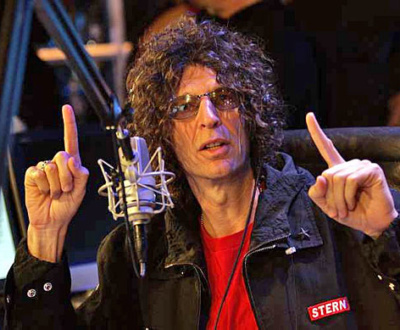Every Message is a Movie – Creating Content with Narrative in Mind
- April 2, 2014
- Content Marketing, Marketing
“We spend our years as a tale that is told…”. The lifecycle and longevity of digital content founds itself upon the same principals as anything else worth sharing – a good story, a shared experience, and piece worth replicating will always connect with the audience. It is through strong narratives, widespread reach, precise framing, translated relevance, and fundamental personal connection that content becomes worth the reader’s time and association. The creative entertainment space is, unsurprisingly, a beacon of this concept.
What do movies, music, television shows, tabloid captions, newspaper op-eds, keynote speeches, press conferences, blog posts, status updates, tweets, and tumbls have in common? They all convey a message through platform-specific framing (among other things). Whether we are conscious of it or not, there are unwritten, unspoken rules that we follow when sharing ideas through media outlets (micro, macro, new, and traditional). These guidelines span from the “rule of thirds” and “vanishing point” in visual imagery, to hashtagging for searchability in Instagram, or posting embeddable links on Twitter. While each medium has their own particular set of user protocol, each rule works toward the same goal:
To put process into perspective, let’s use the example of cinema. When it comes to creating original content and campaigns for your own brands, think like a movie director. Each piece of content or marketing campaign should be able to answer (at least) one question: “What is the one thing I want the audience to take away after seeing this?”
As a brand manager, content creator, or movie director, it is your job to visualize that message in a way that relates to the target audience. Additionally (ideally) the message should be framed in such a way so that the original idea can be leveraged – with slight rewording or repackaging, depending on how the first set of readers decide to share it with their networks – to broader audiences, all without losing its core meaning. The first step in this journey is to identify, what is your idea?
Isolating the “one thing” you want to tell your audience is not the same as limiting the possibilities for second, third, or even twelfth extensions or interpretations. Hopefully, you will be able to take your core idea and retell it in as many ways as there are audiences and media platforms to see and share it. What isolating the one thing does mean though, is that you will have to spend time with your material, data, information, product, or initiative to figure out – well, what is that one thing? If you cannot come to a conclusion, there is a conclusion in itself – either what you are ready to promote, is not ready for public display, or therein lies your challenge: create the frame that makes your content noteworthy.
Let’s take the example of The Hunger Games, a new standard in transmedia storytelling. Brief aside – transmedia storytelling (to jog a few memories) is:
“[T]he technique of telling a single story or story experience across multiple platforms and formats using current digital technologies … From a production standpoint, it involves creating content[2] that engages an audience using various techniques to permeate their daily lives.”
The digital space has allowed for incredibly innovative ways of repackaging one piece of content across multiple platforms and channels in a way that attracts widely differing audiences to the same story told in modes that are uniquely targeted to specific niches within the mass.
The Hunger Games marketing campaign for its first two releases capitalized well on the array of available new media when promoting the feature films. What is key about their campaign is how it leveraged cinema techniques across digital and social media platforms. Moreover, how by leveraging storytelling and content creation techniques, the strategy further leveraged the marketing success to box office triumph.
The film franchise takes place in
“[T]he ruins of what was once North America, [where the] evil Capitol of the nation of Panem forces each of its twelve districts to send a teenage boy and girl to compete in the Hunger Games. A twisted punishment for a past uprising and an ongoing government intimidation tactic, The Hunger Games are a nationally televised event in which ‘Tributes’ must fight with one another until one survivor remains.”
Instead of relying on posters, product and purchased media placement, and the publicity behind their star-studded cast, Lionsgate Films and Ignition Creative created a virtual world that blurred the lines between Panem and the viewing public’s own reality. Danielle DePalma, the social media strategist behind the campaign, made the marketing campaign about the viewers as tributes and Panem citizens themselves.
The slogan for The Hunger Games is “The World is Watching,” and the content surrounding the film’s release maintained that one message throughout all stages of the lifecycle. Leading up to the films release, fans could register for their own “District” (municipality, county, state within Panem) on thecapitol.pn (a fully functioning website for the fictional “Capitol” government), create their own badge on District-specific Facebook pages, read the “Capitol Couture” (an actual online fashion / culture magazine focused on Capitol style) on the publication’s tumblr, and – as you can imagine – everything in, out, and between. For a feature film that would eventually gross $450M, each individual fan who participated in the online campaign could walk away from the theatre of their laptop, mobile device, or local cinema with at least one thing in mind: “The World is Watching.”
Here, the key is to immerse the audience in your content, create a world where the reader, viewer, or listener can share a mediated experience with you (the creator, or director) and other like-minded individuals. Not every piece of content is going to have the mettle of a wildly popular teen novel about an entertainment surveillance dystopian society (much akin to modern American celebrity culture, no less), but narratives mattered before movies. Every piece of content, every campaign can succeed so long as you direct the material toward the intended audience. Isolate the message, focus the frame, engage with the audience, ensure the right pieces are in place to maintain the momentum, and allow the audience room for interaction and inclusion with the material – make the message matter. Direct the story, no matter how slim the script – after all, in the big wide web… the world is watching.
This is author biographical info, that can be used to tell more about you, your iterests, background and experience. You can change it on Admin > Users > Your Profile > Biographical Info page."
About us and this blog
We are a digital marketing company with a focus on helping our customers achieve great results across several key areas.
Request a free quote
We offer professional SEO services that help websites increase their organic search score drastically in order to compete for the highest rankings even when it comes to highly competitive keywords.
Subscribe to our newsletter!
More from our blog
See all postsRecent Posts
- 4 Reasons You Should Be A/B Testing Your Email Marketing Campaigns May 15, 2018
- The Secret Strategy for Using Surveys to Boost Conversions (It’s Not What You Think) February 2, 2017
- Advanced Brand Positioning Strategies December 31, 2016




